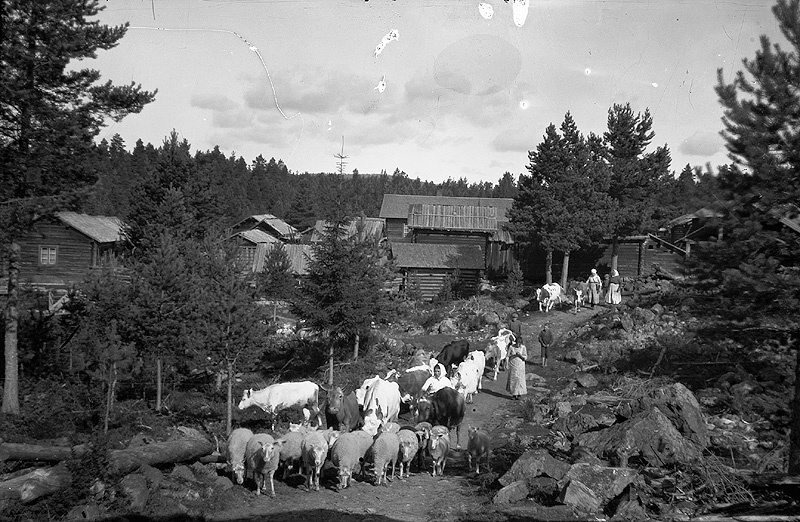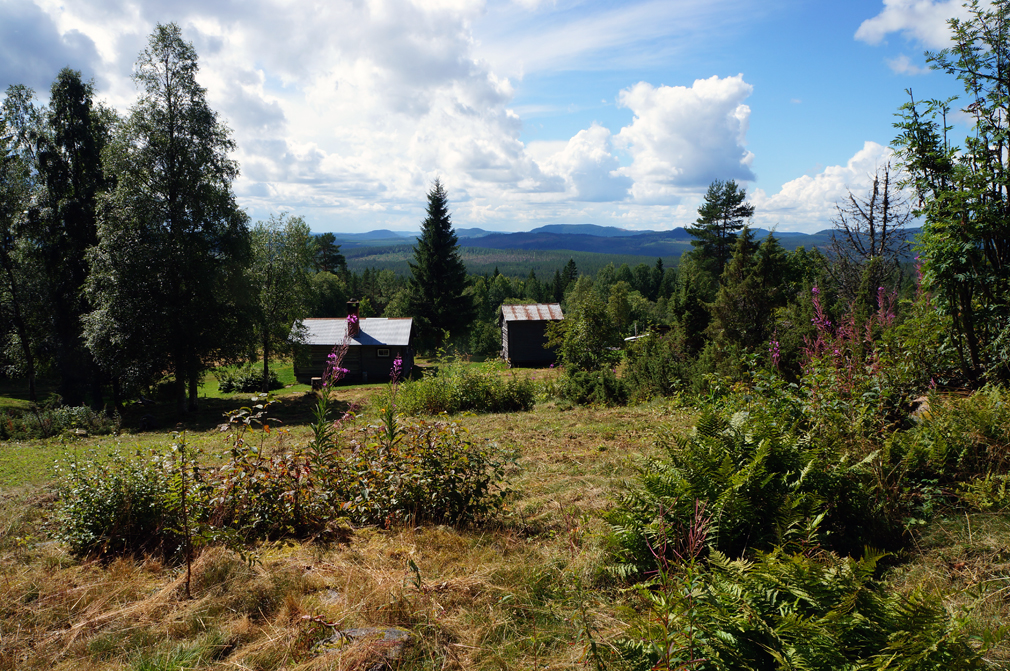The future of 'faboden'
The spelt shielings, pasture cottages in the hills of Dalarna need support to remain active.
-
 Is the “fäbod” like the one here (Axi “fäbod” in Mora parish) about to disappear in Sweden? Photo: Karl Lärka
Is the “fäbod” like the one here (Axi “fäbod” in Mora parish) about to disappear in Sweden? Photo: Karl Lärka -
-
The Swedish “fäbodar”, or shielings as they are sometimes called in English, are decreasing in numbers and must fight for their existence.
The users of “fäbodar” are worried they might lose their agricultural support. Sune Pettersson at Gåsbäckens fäbod in Ockelbo is one such “fäbod” user. He gets up at five in the morning, makes a fire, and puts on the coffee before going out to tend to his animals. “Some days I make ‘messmör’ (the soft whey-cheese so popular in Sweden). Not everybody knows how to make it, I have learnt from others. Keeping animals is something I’ve learnt from my grandmother.” The milk car arrives every other day, but like many “fäbods” users, Pettersson makes cheese and traditional “messmör” himself.
According to the county administrative board in Dalarna, there are some 200 “fäbodar” in the province’s counties, but they are decreasing in numbers, which is something authorities is trying to prevent. “It’s actually quite a big issue, it’s about our identity and it’s a Swedish brand – the ‘fäbod’,” says Ann-Catrin Hedén at the county administrative board.
“You learn a lot by visiting, it’s a magical story.” Today there’s an explicit political goal to try to protect significant cultural and natural values and traditional provinces, which is the basis for today’s financial support to “fäbodarna” from the European Union. The evaluation of this goal is what will be the foundation for what the future support for users of “fäbodar” will look like. “Many users will fall through if the support isn’t well thought out,” says Pauline Palmcrantz, chairwoman of the association of Sweden’s “fäbod” users. Last spring a doctoral thesis was presented, which focused on the placement of use of “fäbodar” in politics. According to this thesis, there’s a conflict regarding whether the use should be valued primarily for its pastureland, or for its heritage value. Palmcrantz is critical to Dalarna’s county administrative board. She believes they force “fäbod” users to make a living on activities like tourism. Though she has nothing against tourism per se, she believes it’s a problem if tourism becomes a prerequisite for the use of “fäbodar”. -
 “Fäbodar”, or shielings as they are sometimes called in English, are decreasing in numbers
“Fäbodar”, or shielings as they are sometimes called in English, are decreasing in numbers -
-
“As a tourist you want to see a woman with long braids, walking and singing in the sunset, and you want to see the right sort of native breed among the animals. But biodiversity doesn’t care about breeds.” Tin Gumuns at Karl-Tövåsens fäbod in Rättvik, receives tourists six days a week. There’s a coffee parlor there, as well as sales of products handmade in the “fäbod”. “I can’t afford just sitting here in the forest,” Gumuns says. “I need people to come and buy things from me.” She believes there’s a great public benefit in keeping the tradition of “fäbodar” alive. “I have girls that I hire every summer, and I teach them how to cook without electricity and without any impact on the environment, something I think we might benefit from one day.” Ann-Catrin Hedén says the users of these “fäbodar” have a vast amount of knowledge that must not go to waste. “If we lose them, we lose the big picture,” she says. “But it all depends on political decisions.” A “fäbod” or “fäbovall” is a collection of hut-like buildings used only in summertime. In the past they were a common sight in the Scandinavian forests, as well as in the Alps (where they are known as “alpage”). In Sweden “fäbodar” can be found in the following provinces: Dalarna, Härjedalen, Jämtland, Hälsingland, Medelpad, Ångermanland, and Lappland. The tradition with “fäbodar” began to decline after WW2, and many of them fell into decay. A “fäbod” used in the traditional way is today called a living “fäbod” and also functions as a tourist attraction.
-
-
-
